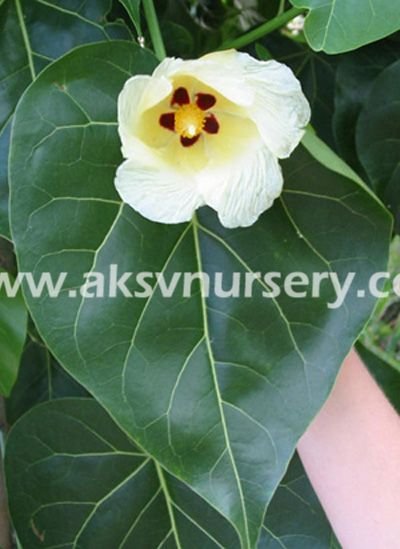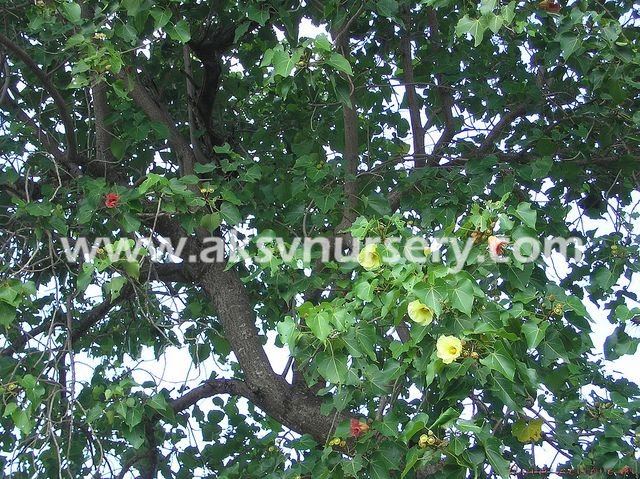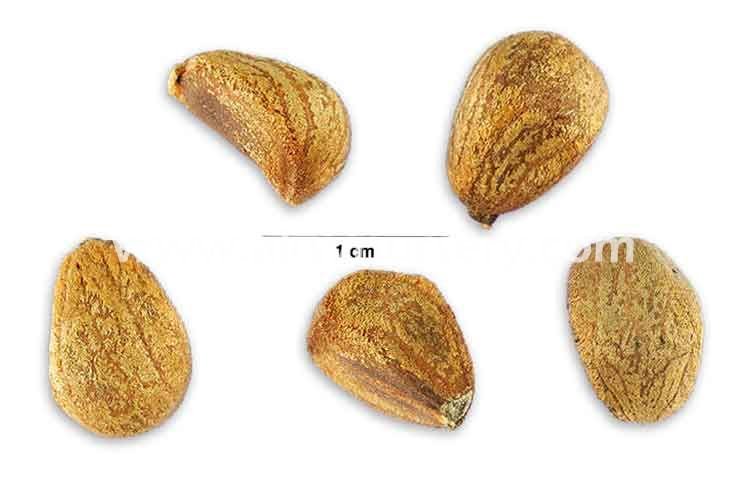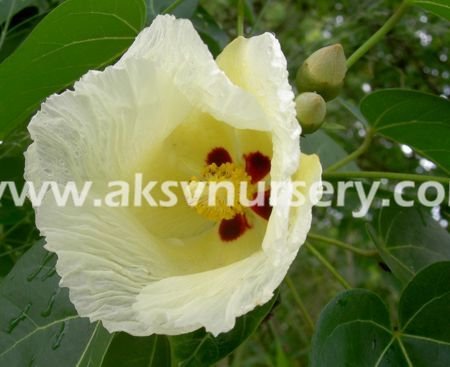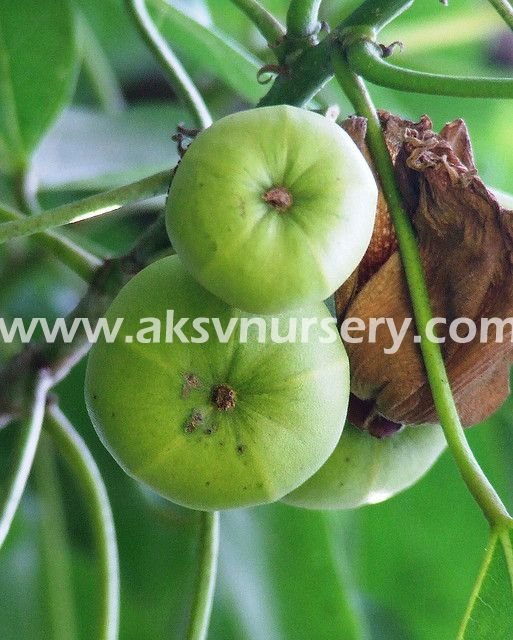Thespesia populnea, Hibiscus populneus
Family: Malvaceae
Seaside Mahoe, Portia Tree, Milo
Origin: India
Known as Milo in Hawaii, this tree is often planted in front of Buddhist Temples.
Originally from the Old World, the Portia Tree was brought to Hawaii by early Polynesian settlers. The Tahitians considered it sacred and grew it near places of worship.
The fruits, flowers and young leaves are edible. The timber is hard, termite-resistant, has an attractive grain and dark-red color, and is naturally oily so it can be highly polished. As the timber does not impart a flavor, it is often used to carve wooden food bowls and food utensils in Hawaii.
Other products extracted from the plant includes tannin, oil and gums (a dark red resin exudes from the bark). A fast growing shrub that grows into a small tree with spreading branches, it casts welcome shade and in Hawaii were planted near homes for this purpose. In India, they were planted to provide shade in coffee and tea plantations.
Has many traditional medicinal uses.

